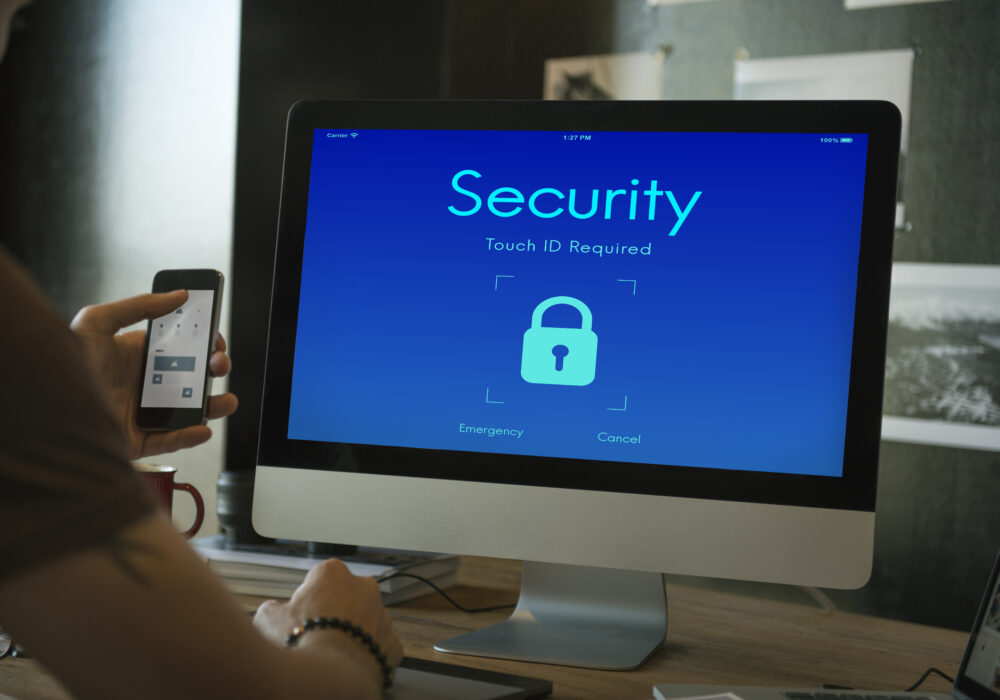Each year, thousands of UK businesses fall victim to cyber attacks. From Phishing scams to ransomware, the threats are multiplying, with attackers employing more sophisticated tactics to exploit a wide range of IT vulnerabilities. Assembling a vigorous and comprehensive cyber security framework has never been more vital for businesses across all sectors. By building a robust security posture, you’ll be able the ward off the majority of the threats in circulation and enhance the resilience of your business in the context of a fast-moving and hostile threat landscape.
Recognising Shifts in the Cyber Threat Terrain
In recent times, a convergence of factors has intensified the hostility of the cyber threat landscape, making the task of securing IT assets increasingly complex. These factors include the following:
- An Expanded Attack Surface: Attackers now benefit from a wider range of exploit opportunities due to the diverse and distributed nature of modern IT systems. Cloud services, mobile devices, and internet of things infrastructure have increased complexity and presented new vulnerabilities to criminals.
- The Rise of Ransomware: Ransomware has skyrocketed in recent years, driven by the emergence of ransomware-as-a-service on the dark web, the migration of organised criminality into the ransomware sphere, and increased digital dependency more generally.
- Remote Work Risks: Remote work can allow businesses to operate more flexibly, but it can also give rise to a distinct set of security challenges that businesses must proactively mitigate. Home and public networks rarely offer the same level of protection as office setups, making it easier for attackers to identify and exploit vulnerabilities.
- An Increase in Supply Chain Attacks: Cyber criminals are increasingly using smaller, less secure elements within the IT supply chain as a way to infiltrate larger, more lucrative targets. Software, hardware, or services are intercepted at the pre-delivery stage and then used as an entry point to attack a larger network, or multiple large networks at once. These attacks have the ability to cause damage of unprecedented scale and severity, and can be particularly difficult to detect.
4 Technical Controls for Enhanced Cyber Resilience
In our last blog, we examined policies and practices essential for building an effective cyber security framework and fostering a culture of cyber vigilance within your business. Now, let’s consider some of the technical controls that should work in parallel with your organisational measures to help you achieve cyber resilience.
Anti-malware Protection
Anti-malware protection – otherwise known as antivirus protection – is a cyber security fundamental that no IT system should be without. The goal of anti-malware solutions is to detect, quarantine, and remove malicious programmes that enter an IT system before they have the ability to cause harm. Implementing malware countermeasures can be done in a variety of ways. Consider whether your IT system has any of the following in place:
Antivirus Software
Antivirus software detects, quarantines, and removes malware from endpoint devices and networks. In the past, antivirus programmes relied solely on threat signature libraries: a collection of digital “fingerprints,” or patterns, used to identify known malware. Modern systems use a combination of known threat signatures and heuristics, providing more comprehensive protection against both catalogued threats, and previously unencountered malware.
Firewalls
Firewalls play a key role in combatting malware. Through the enforcement of pre-configured rules, firewalls can be used to prevent employees from accessing untrusted, potentially harmful online content. Firewalls also leverage threat signature detection, allowing malware to be intercepted and neutralised before it gains purchase in the network.
Extended Detection and Response (EDR)
EDR platforms offer holistic, real-time threat monitoring and response, covering endpoints, networks, cloud solutions, apps, and identities simultaneously. Using artificial intelligence, these advanced platforms are able to detect subtle threat correlations across disparate systems, enabling swift, decisive action against escalating threats for the ultimate in digital protection.
Email Security Solutions
Email security platforms leverage a variety of techniques to detect and respond to email-borne threats, including malware, which often comes hidden within the attachments of phishing emails. Spam filtering, signature-based malware detection, sandboxing, email content analysis, and URL scanning are just some of the technologies at play in these effective security tools.
In addition to applying anti-malware solutions across your networks, servers, and endpoints, adhere to the following best practices to further mitigate the malware threat:
- Update anti-malware solutions regularly, ensuring that threat libraries are kept current.
- Only download software from trusted, reputable sources.
- Educate staff on the dangers of opening attachments from unknown sources, as well as ‘drive-by downloads’ that can occur from visiting rogue websites.
- Minimise file sharing using removable storage devices, as these can become infected with malware as they pass between devices.
Mobile Device Management (MDM)
Remote and hybrid working practices have become more popular in recent years, with many employees now using mobile devices for work purposes, including laptops, tablets, and mobile phones. Mobile device management platforms enable security teams to centrally govern these devices, ensuring that security settings and configurations are applied consistently and in line with an organisation’s security policies.
By implementing MDM, you can give employees the flexibility and productivity benefits afforded by mobile devices without compromising your business’s security posture. Here are some of the policies and security measures MDM can be used to enforce:
- Password Policies: Set and enforce password complexity and length requirements to prevent unauthorised access to your accounts.
- Encryption: Enforce encryption at both device-level and on transiting data to prevent malicious eavesdropping and to safeguard locally stored information in the event of device loss or theft.
- Application Management: Control which applications can be downloaded onto your work devices by enforcing an ‘application whitelist.’
- Remote patch Management: Push the latest updates and security patches to your remote devices, ensuring all devices feature the latest software and operating system versions.
- Network Security: Apply and enforce network access restrictions to ensure devices can only connect to trusted networks or those with stringent security standards.
By exploring MDM, you’ll help to lower your business’s risk profile while leveraging the numerous benefits of enterprise mobility.
Data Encryption Solutions
Encryption is a technical process that involves encoding data into an indecipherable format, rendering it unusable to everyone other than authorised parties. This vital cyber protection can be applied to data both in transit and at rest, protecting it against interception and unauthorised access. Data encryption can be implemented in a range of settings. Consider the sensitivity of your data, the risks it’s exposed to, and whether encryption might be an appropriate safeguard in the following contexts:
- File and Folder Encryption: Encryption can be applied at individual file or folder level, useful in situations where sensitive data must be securely shared or stored. Encryption can be applied to files or folders before they’re uploaded to a cloud storage service, protecting the information in the event that the user’s account, device, or the cloud storage service is compromised.
- Email Encryption: Email encryption protects the contents of emails against unauthorised interception both in transit and while stored on email servers. Email encryption typically leverages public-key cryptography, whereby a ‘public’ key is used to encode the message, which the recipient then decodes using their ‘private’ key.
- Database Encryption: Encryption can be applied to protect sensitive information stored in databases, a useful safeguard for information types that demand elevated protections, such as healthcare information, personal data, financial records, and intellectual property. It’s worth noting, however, that full database encryption can result in a significant performance penalty, so it’s best to apply encryption only to tables, fields, or records containing sensitive information.
- Mobile Device Encryption: Mobile devices can be susceptible to loss or theft, which in turn, makes the data stored within them vulnerable to unauthorised access. Mobile operating systems offer device encryption features, which encrypt all data and applications hosted on a device. Access is only granted to the authorised user who is able to successfully authenticate onto the device.
Multi-Factor Authentication (MFA)
Multi-factor authentication is an identity verification process that requires users to submit two or more forms of identification to access a digital resource, such as a device, online account, or application. Traditional authentication protocols usually require a username and password. With MFA, the additional component required is typically something that would be difficult or impossible for an attacker to guess or spoof, thus providing greater protection against unauthorised access.
The additional verification factors involved in MFA vary. Some of the most common include:
- Something you know: Users are required to enter an additional memory item, such as a pin number or the answer to a security question.
- Something you have: Users are required to verify their identity by proving they possess a physical item that is registered with them. For example, a one-time passcode might be sent to the user’s mobile phone, or they may be required to connect a security token via flash drive.
- Something You Are: Users are required to submit a biometric identifier. Common examples include face, eye, and fingerprint scans, and voice samples.
- Somewhere You Are: MFA can be configured to only grant access to users logging in from an expected location. This can be implemented using GPS tracking or IP address recognition.
Multi-factor authentication significantly enhances account security by avoiding a single point of failure, since one compromised factor won’t be enough for an attacker to gain entry to an account. Work with your IT team to activate MFA wherever it’s workable across your IT estate.
In Summary
If you’re concerned about digital resilience, or you’re worried that there might be holes in your cyber security infrastructure, then start a conversation with your IT team today. They’ll be able to assess your security posture, identify vulnerabilities, and offer guidance on reinforcing security controls and practices that fall below the ideal standard.
BCNS – Security-focused IT services for Devon Businesses
From IT support and infrastructure, to cloud and connectivity solutions, BCNS is a full-service IT provider committed to helping Devon’s businesses gain a strategic advantage through the power of technology. Today’s hostile threat environment requires potent defences. Our managed cyber security services offer a full complement of protections, covering everything from your network perimeter to your email accounts. We apply advanced, real-time threat monitoring to identify and neutralise security risks before they have a chance to impact your systems.
Keen to know more? Get in touch with BCNS today, and we’ll help you address your business’s cyber security challenges.




